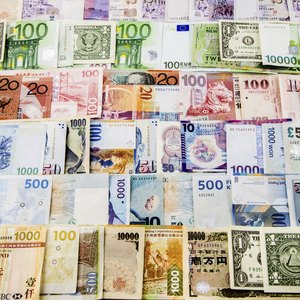
Statements for foreign exchange accounts provide information about forex trades you've made during the past month, or whatever period is covered by the statement. A "trade date" for a given transaction is the date upon which you agreed to the transaction. The "value date" is the date when the trade was settled -- that is, completed.
Forex Trading
Forex trading involves the exchange of currencies. You trade one currency -- say, U.S. dollars -- for an equivalent amount of another currency, such as euros, Japanese yen or Russian rubles. Every pair of currencies has an exchange rate. This tells you how many euros, yen or rubles you can get per American dollar, or how many dollars you can get for 1 euro, 1 yen or 1 ruble. Exchange rates are constantly fluctuating with the relative values of the underlying currencies.
Trade and Value Dates
Say that on April 10 you put in an order to exchange 100 U.S. dollars for euros at a rate of 0.7884 euros per dollar. Your statement would show a trade date of April 10. That's the day you committed to the trade and locked in the exchange rate. The actual trade, however, won't be executed just yet. Most forex trades take two days to settle, though some (such as exchanges of U.S. dollars for Canadian dollars) take only one day. On April 12, the trade settles: You pay $100 and receive 78.84 euros. Your statement shows April 12 as the value date. The exchange rate may have changed since the trade date, but the rate that applies is the one that was in effect on the trade date.
References
Writer Bio
Cam Merritt is a writer and editor specializing in business, personal finance and home design. He has contributed to USA Today, The Des Moines Register and Better Homes and Gardens"publications. Merritt has a journalism degree from Drake University and is pursuing an MBA from the University of Iowa.

